5 Reasons to Grow Agarita (Mahonia trifoliolata)
Agarita (Berberis trifoliolata or Mahonia trifoliolata) is an evergreen shrub with holly-like foliage that thrives in full sun and provides year-round interest in your garden. It has clusters of fragrant yellow flowers in early spring, bright red berries in summer, and evergreen foliage throughout winter!
This Texas native plant is a must for a xeriscape and drought-tolerant native plant garden. It looks great paired with other heat-loving plants like Prickly Pear cactus and is a great replacement for non-native Nandina:
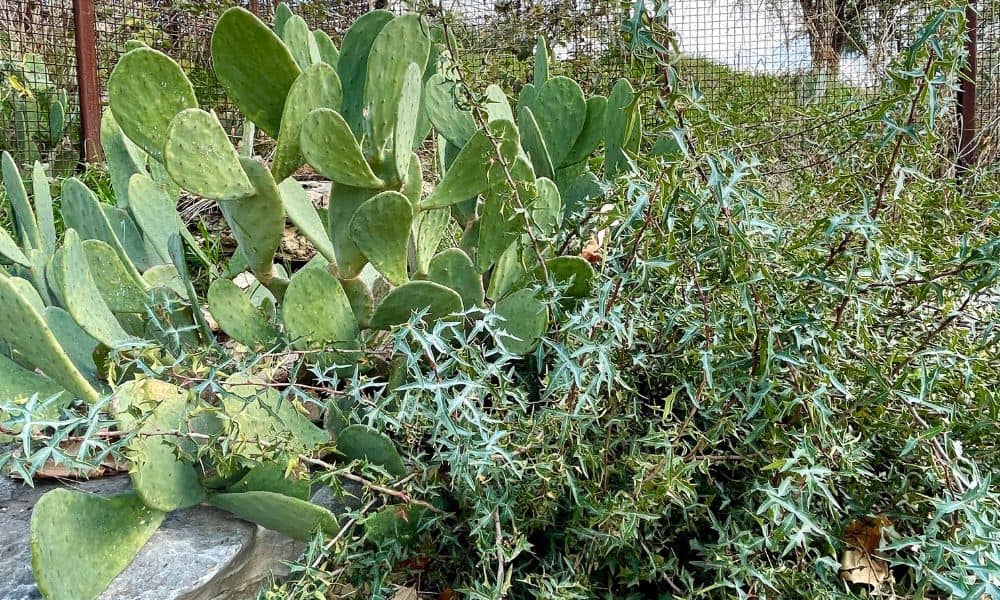
Looking for other drought-tolerant native perennials? Start by downloading my FREE 10 Texas Drought Tolerant Plants PDF. You can take this handy one-pager with you to the nursery.
5 Reasons to Grow an Agarita Shrub
1) Agarita is very drought tolerant
Agarita is a full sun-loving shrub that thrives in Texas’ arid climate. It is very drought tolerant once established.
2) Its pretty evergreen foliage stands out in the garden
One of Agarita’s standout features is its striking evergreen foliage. Its holly-like leaves are a pretty greenish gray color that can add a nice contrast. The sharp points on the edge of its leaves make it a natural hedge or barrier plant. Just don’t plant it near walkways!
3) Pollinators love Agarita’s fragrant spring blooms
Agarita blooms as early as February, providing one the earliest available nectar sources to pollinators along with some of our native spring blooming trees. Clusters of bright yellow flowers with the fragrance of honey appear at the ends of branches.
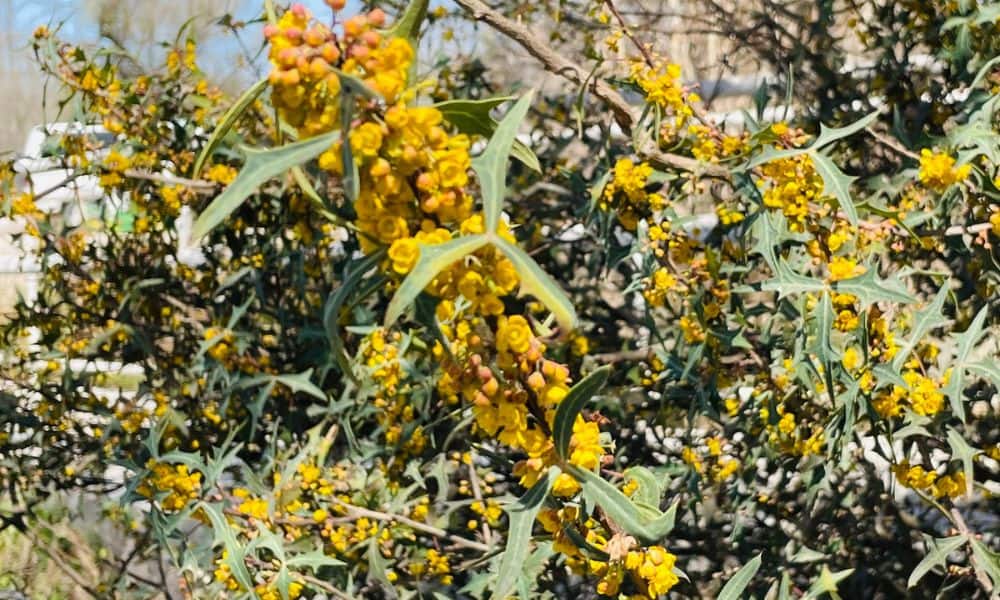
4) You can eat its bright red berries!
By early summer, Agarita produces a small bright red berry that birds love, but also humans. I hear Agarita berries make a great jam!
However, harvesting the berries from the pokey shrub can be a bit difficult. I’ve heard the best method is to put a blanket underneath the shrub and then to hit it with a stick to make the berries fall onto the blanket. If you try it, let me know how it goes!
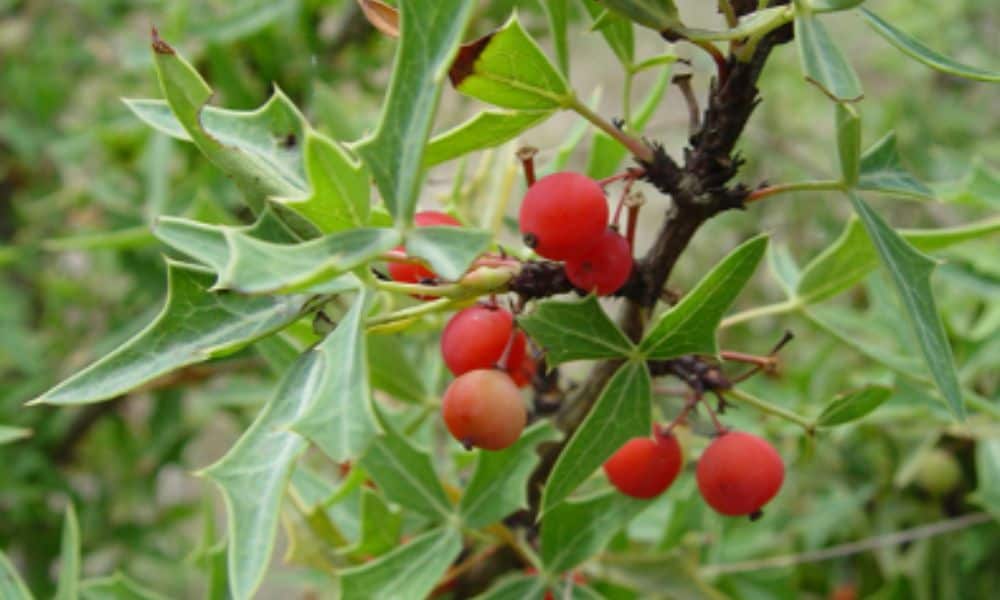
Agarita is also said to have some medicinal value. You can make a tea from Agarita roots to help with various digestive issues.
5) This native shrub provides important wildlife habitat
Agarita’s evergreen sharp leaves also serve as a protective refuge for birds and small mammals, offering a safe space for nesting and shelter. At the same time, Agarita is very deer resistant if you have a lot of deer in your area.
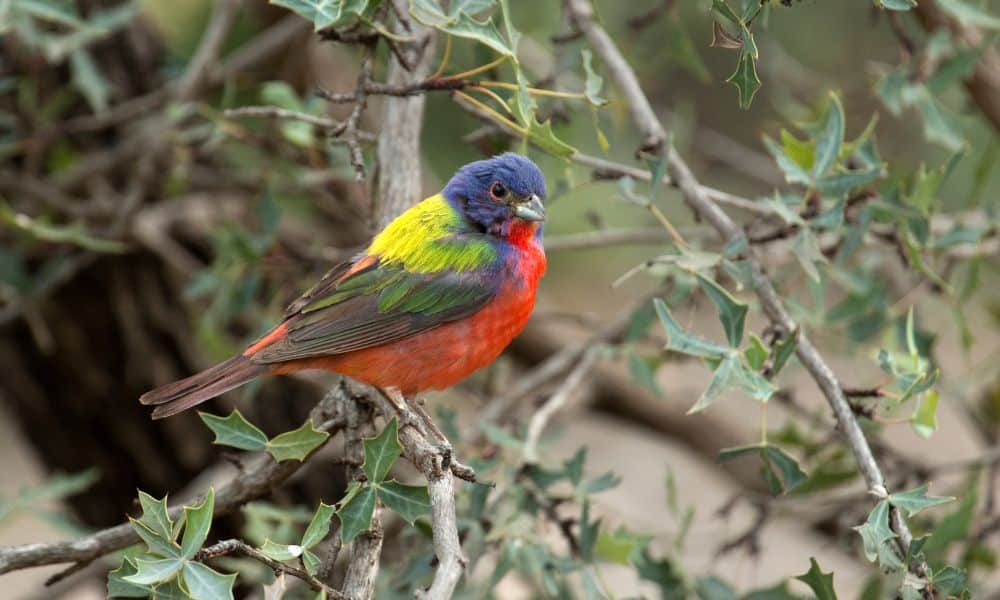
Also, since Agarita plants are not commonly used in the landscape trade, if you add this species to your garden you will help increase the biodiversity in your neighborhood!
Where is Agarita (Mahonia trifoliolata) native to?
Agarita has been found growing in the wild throughout much of Texas, from western Texas to the Edwards Plateau, and even north through the Panhandle. I often see Agarita shrubs growing along the edge of Ashe Juniper wooded areas in San Antonio and the Texas Hill Country.
Agarita is also native to parts of southern New Mexico and Arizona. See its native range here.
How do you maintain Agarita?
This native bush is not meant to be pruned into a rounded shrub! Let it grow naturally and it will look beautiful. It can grow to be a large bush, so plant it away from walkways to avoid brushing up against the green spiky leaves.
Also don’t overwater Agarita. Once established, it needs next to zero supplemental water beyond rainfall. Agarita does well in light shade, but also thrives in full sun.
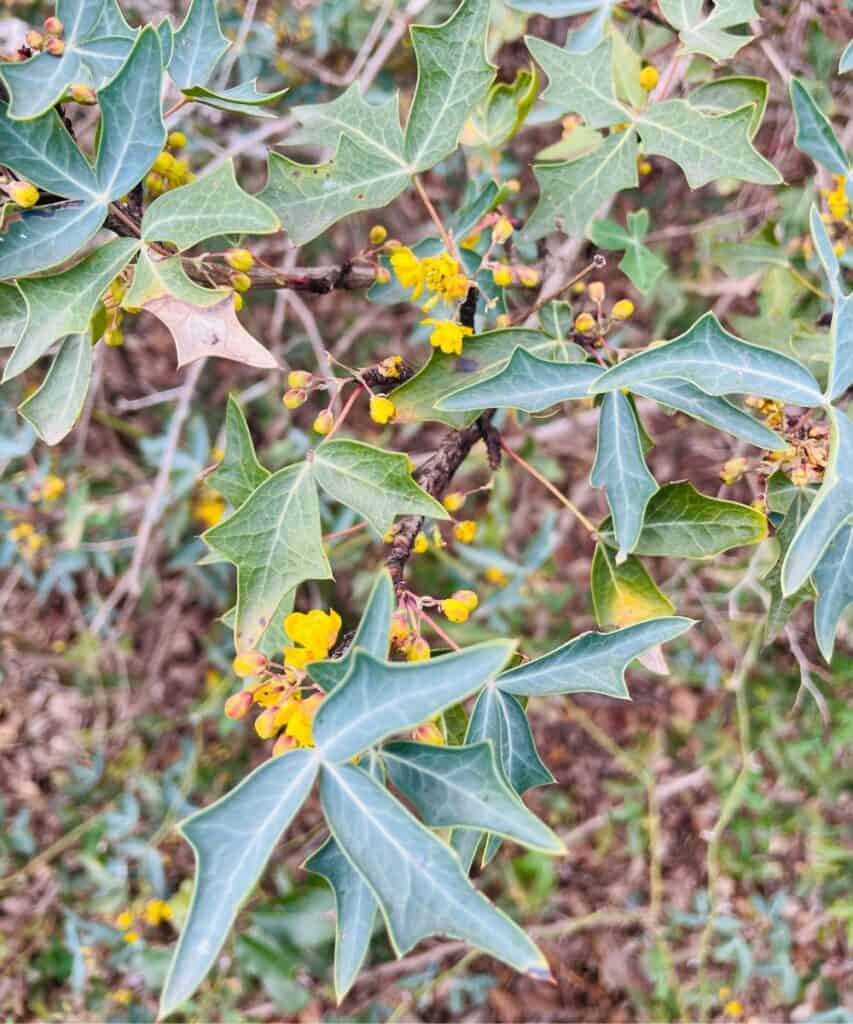
Where can you buy Agarita?
You likely won’t find Agarita (Mahonia trifoliolata) at big box nurseries like Home Depot or Walmart. Instead, head to a locally owned nursery that specializes in Texas native plants, or keep an eye out for native plant sales hosted by your local native plant society chapter.
Download the Free PDF: Texas Drought Tolerant Plants
Want more ideas for drought-tolerant native plants like Agarita?
I created a handy one-page PDF for you to print and take along with you to the plant nursery. It includes a thumbnail photo of each plant along with both its common and scientific name and helpful growing info. Get it here:
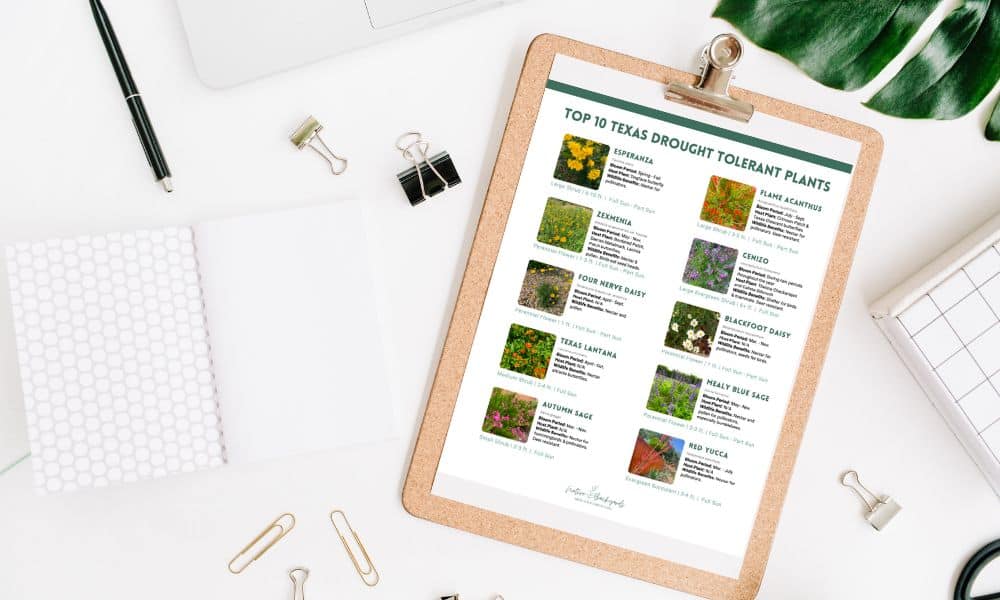
Save this plant idea to Pinterest!


Welcome to Native Backyards! I’m Haeley from San Antonio, Texas, and I want to help you grow more native plants.
I have seen firsthand how the right plants can bring your yard to life with butterflies, bees, and birds. I’ve transformed my yard with Texas natives and I’m excited to share what I’ve learned with you.
Join my newsletter here! – each week I’ll send you helpful tips to make your native plant garden a reality!
Want to learn more about me and my garden? Check out my About page!

Thanks for including this article about Agarita. It is a superb, native plant that is underused in landscape gardening.
As far as collecting berries, I put an umbrella upside down underneath the bush then hit the stems with a broom handle. The berries fall into the center of the umbrella making them easy to collect. The berries make a great jam too!
The regional map that you linked to is color-coded, but there is no key. Does the dark green indicate it will grow well? Or the light green? Or both??
Hi Trisha, great question! The dark green signifies that that plant is native to that state, and the light green shows the specific counties where it has been recorded growing in the wild. Hope that helps!